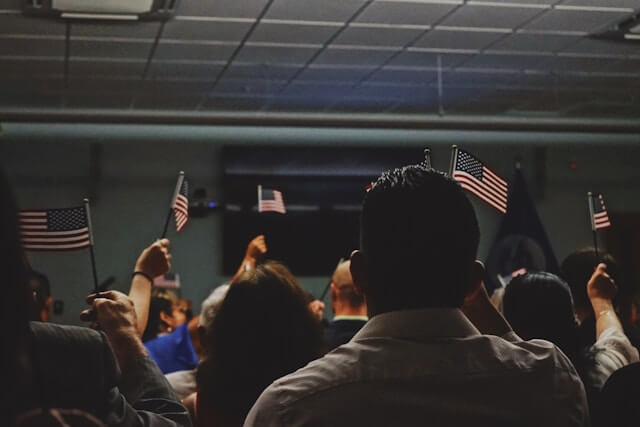Remote employment is the trend nowadays. Over time, starting with the Covid-19 Pandemic, many workers tend to now prefer remote work over on-site employment. And who’s to blame them?
With all the benefits of working remotely – no commute, flexible schedules, and the comfort of home – it’s no wonder that this shift is happening.
While the remote work culture is great for workers, employers will need to do more work to comply with regulations. One of which is verifying the employment eligibility of workers. Only that this time, they’ll need to be verifying remote workers.
If your company hires remote workers, you may be at crossroads wondering how to go about this procedure. And we understand your concern. You want to hire the best talent and at the same time, ensure that you’re compliant with regulations.
To help you, we’ve written this article to explain everything you need to know about how companies use e-Verify for remote employees.
What is e-Verify?
E-Verify is an internet-based system operated by the Department of Homeland Security (DHS) in partnership with the Social Security Administration (SSA).
It allows employers to verify the employment eligibility of their employees, both U.S. citizens and non-citizens, by comparing information provided on the employee’s Form I-9 with records available to the DHS and SSA.
The basic job of e-Verify is to help employers ensure that they are hiring eligible individuals. That is, people who are legally authorized to work in the United States.
Also Read: 20 Popular U.S. Visa Interview Questions and Answers
A little back story – How did we get here?
Employee verification has not always been done this way. Much of the newer way of doing it came from the impact of the global pandemic that ushered in a rapid shift to remote work.
With more employees working from home or from locations outside their employer’s jurisdiction, traditional methods of in-person verification became impractical.
As a result, employers turned to technology solutions like e-Verify to meet their verification needs in a remote work environment.
Basically, the e-Verify platform is an attempt by the Federal government to help ensure that private employers only employ eligible employees.
E-Verify and alternative procedure
As we mentioned earlier, the normal employment verification process involved in-person screening of employees’ documents.
Now the new method of remote document verification, allows qualified employers to verify Form I-9 documentation remotely.
This alternative procedure took effect from August 1, 2023. In essence, you will need to do this remote verification for any employee hired on or after this date.
What does E-Verify mean for employers?
If you’re an employer in the United States, you need to pay attention as getting your employees verified is crucial for staying compliant with immigration laws.
Using e-Verify helps you maintain a legal workforce and reduces the risk of hiring unauthorized individuals. It also provides a level of assurance that you’re hiring qualified and eligible candidates for your company.
This way you can reduce the risk of legal penalties for hiring unauthorized workers.
Also Read: How to Decide Which Country to Apply for Schengen Visa
What Does it Mean for Employees?
For employees, understanding the e-Verify process is essential. They may need to provide additional documentation or information to complete the verification process.
Usually, employees are expected to provide documents such as a US passport, Green Card, driver’s license, or social security card to establish their identity and work authorization.
How Companies Use e-Verify for Remote Employees: A Step-by-Step Process
1. Enrollment
The first step for employers is to enroll in the e-Verify program. This involves completing an online registration process and agreeing to comply with the program’s terms and conditions.
2 . Initiating the Process
The employer starts the process by creating an e-Verify case for each new employee within three business days that they start work. Note that this is done online through the e-Verify portal.
3. Completing Form I-9
This step is for the employee. Here the employee completes Form I-9. They first send copies of their I-9 documents electronically. Next, they show the same documents in a video call with the employer.
Also Read: How to Choose Which Country to Study Abroad for Masters Degree
4. Entering Information into e-Verify
The employer enters the information from the employee’s Form I-9 into the e-Verify system. This includes details such as the employee’s name, date of birth, social security number, and document information.
5. Verification Process
E-Verify compares the information provided by the employee to data from U.S. government records like the Social Security Administration and the Department of Homeland Security.
6. Await Case Results
After processing the information, e-Verify provides one of the following results:
Employment Authorized: The employee’s work eligibility is confirmed.
Tentative Nonconfirmation (TNC): There is a mismatch between the information in the I-9 form and the data in the SSA or DHS database. In this case, you need to resolve discrepancies in the information the employee gave.
E-Verify Needs More Time – This means that the case was sent to the DHS for more verification.
Close Case and Resubmit – You need to close the pending case and create a new one for the employee.
Final Nonconfirmation – This means that E-Verify cannot confirm the employee’s employment eligibility.
Case in Continuance: Additional time may be required for verification.
E-Verify needs more time: The case is under review, and a final result will be provided later.
7. Resolving Tentative Nonconfirmation
If a TNC occurs, you will have to notify the employee and provide instructions on how to contest the result or provide additional documentation to resolve the discrepancy. When the verification process is complete, you will get a notification from e-Verify that employment is authorized.
State and Federal laws affecting the use of e-Verify
Although e-Verify is a federal program, there are also state laws that affect its use. Some states require employers to use e-Verify for all new hires, while others have more limited requirements.
For instance states like North Carolina, South Carolina, Tennessee, Arizona require private employers to use e-Verify. Recently, Florida mandated private employers with 25 or more employees to use E-Verify for Florida employees working with them.
As more and more states adopt the e-Verify system, this might be a good time to enroll in it. With that, you will be able to implement the new remote verification procedures for I-9 documentation.
Additionally, there are federal laws that prohibit discrimination based on citizenship status or national origin in the employment verification process.
As expected, if an employer fails to comply where the law clearly says they should, they can expect to get some fines and other sanctions.
Also Read: 10 Reasons Why Your U.S. Visa Application Will Be Denied
Moving Ahead
Now that you understand how companies use e-Verify for remote employees, it’s important to ensure that you’re following the process correctly.
Make sure your HR team is trained on how to use the e-Verify system and that all employees are aware of their responsibilities during the verification process.
Also, find out if your state allows you to use a representative who can conduct the e-Verify process. Some states limit representatives to attorneys and other legal personnel.
Remember, maintaining compliance with immigration laws is important for the success and reputation of your company. By using e-Verify, you can simplify the verification process for remote employees as you can now hire without the hassles of in-person screening.
While at it, endeavor to stay informed about any updates or changes to immigration laws and regulations that may impact the e-Verify process.
If you stay proactive and vigilant, you can ensure that your company remains compliant with all applicable laws and maintains a workforce that is legally authorized to work in the United States.
But what if you are not enrolled in E-Verify already? Then it’s time to enroll. You need to do this as soon as you can. This way, you can enjoy the ease that comes with verifying the employment eligibility of your employees with as little as your mobile device.
Wrapping Up
In the end, while verifying the employment eligibility of remote employees may present some unique challenges, e-Verify offers a reliable and efficient solution for employers.
As you follow the steps in this article, you can successfully handle the verification process and ensure that your company remains in compliance with immigration laws and regulations. If you’re unsure about how to proceed or have questions about the e-Verify process, consider consulting with legal counsel or reaching out to the U.S. Citizenship and Immigration Services (USCIS) for more guidance.











